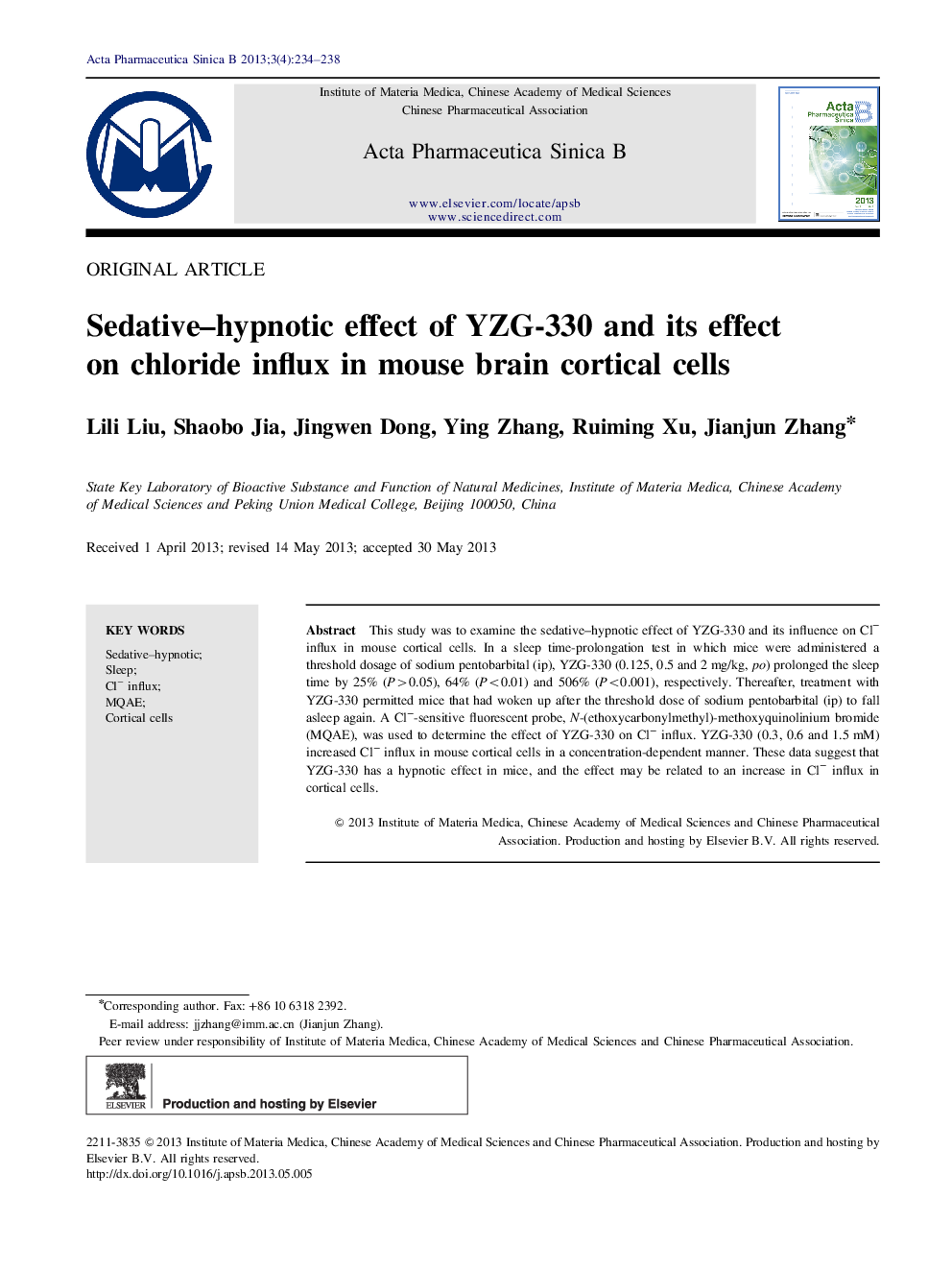| Article ID | Journal | Published Year | Pages | File Type |
|---|---|---|---|---|
| 2474649 | Acta Pharmaceutica Sinica B | 2013 | 5 Pages |
This study was to examine the sedative–hypnotic effect of YZG-330 and its influence on Cl− influx in mouse cortical cells. In a sleep time-prolongation test in which mice were administered a threshold dosage of sodium pentobarbital (ip), YZG-330 (0.125, 0.5 and 2 mg/kg, po) prolonged the sleep time by 25% (P>0.05), 64% (P<0.01) and 506% (P<0.001), respectively. Thereafter, treatment with YZG-330 permitted mice that had woken up after the threshold dose of sodium pentobarbital (ip) to fall asleep again. A Cl−-sensitive fluorescent probe, N-(ethoxycarbonylmethyl)-methoxyquinolinium bromide (MQAE), was used to determine the effect of YZG-330 on Cl− influx. YZG-330 (0.3, 0.6 and 1.5 mM) increased Cl− influx in mouse cortical cells in a concentration-dependent manner. These data suggest that YZG-330 has a hypnotic effect in mice, and the effect may be related to an increase in Cl− influx in cortical cells.
Graphical abstractYZG-330 (0.3, 0.6 and 1.5 mM) increased Cl− influx in mouse cortical cells in a concentration-dependent manner. These data suggest that YZG-330 has a hypnotic effect in mice, and the effect may be related to an increase in Cl− influx in cortical cells.Figure optionsDownload full-size imageDownload as PowerPoint slide
